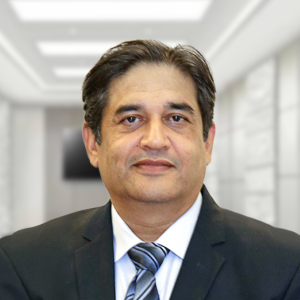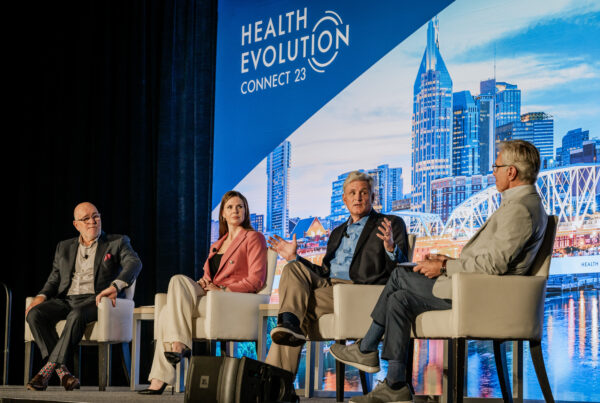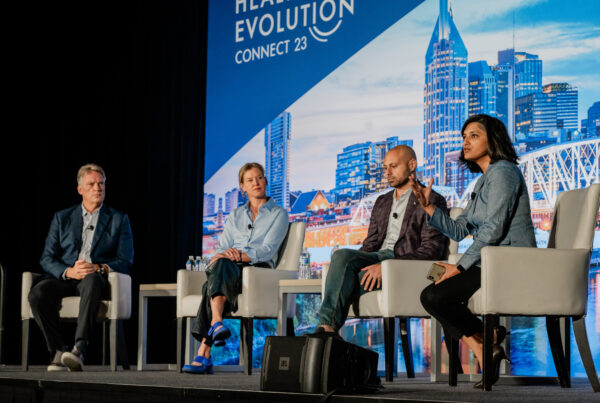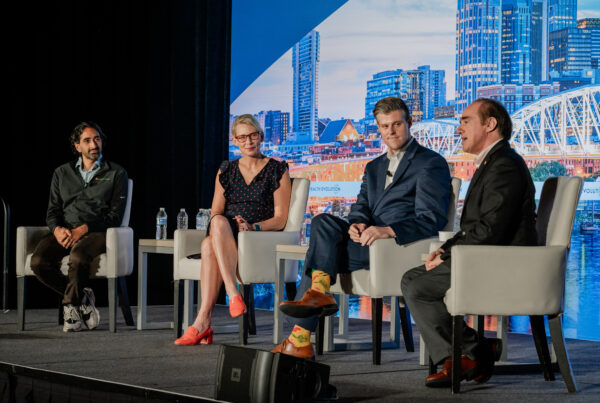Milind Godbole, fondly known as MG, defines his career by his belief that profitability and ethical practices are not mutually exclusive. He has an entrepreneurial mindset with a proven track record of turnarounds, helping businesses move away from challenging situations, and helping them grow off their current platforms using technology as an enabler.
He has been resourceful in building his previous organization, the MphasiS IT/ITES business from 10 employees to 13,000 employees globally, followed by the growingAditya Birla Minacs Portfoliofrom 3,200 people to 12,000 people in Asia Pacific. In his professional journey, he successfully led diverse roles in technology, global projects, transitions, and relationship management.
He joined GeBBS Healthcare Solutions in 2013 when the company revenue was $12MM with just 2,300 employees. Through a shared vision, thought leadership, and one company–one objective mindset, MG, together with his leadership team, has grown the organization to almost 14,000 employees with a revenue of $165MM. He has managed to take the company to new heights in revenue cycle management (RCM) and risk adjustment solutions.
Health Evolution interviewed MG about his inspiration at GeBBS, his greatest accomplishments as CEO, and how GeBBS is helping to solve health care’s greatest challenges in the coming future.
What is the inspiration fueling GeBBS?
We recognized that companies scale more effectively when they can achieve alignment around thoughtful strategies to maximize quality and minimize costs, delivering enhanced access to premium patient care experiences.
When GeBBS thinks about growth and scalability, it focuses on redesigning organizations in ways that accelerate productivity. Keeping patient care as fulcrum, we constantly develop innovative business models and diversify capabilities which focus on the intersection of people, processes, and technology. Our success lies in empowering our people by streamlining operations with technological investments.
Lately, we have made technology the focal point of all our activities. By striving to automate, innovate, and transform, we have embraced technology as a driving force that boosts our speed, adaptability, and flexibility, enabling us to sustain our growth.
GeBBS stays ahead of the competition by identifying productive opportunities for acquisitions, alliances, and strategic technology partnerships since lack of access to technology should never be a barrier to innovation and scalability.
What should prospective clients expect in the next 18 months? The next 2–3 years?
When thinking about the near future of the health care sector, I see deep focus on the digitization of the value chain. The delivery of patient care is evolving quickly, and commitment to technological excellence will yield the best outcomes. To that extent, I firmly believe that focus will be on outcomes rather than output.
Historically, innovation has been difficult in health care. Complex, heterogeneous, and disparate legacy systems and technology create obstacles to growth and evolution. The barriers to innovation have gotten lower in the last two years and I foresee much rapid adoption of advanced technology in the near future. I predict that there will be much greater adoption of advanced data analytics software since data insights are starting to spur innovation in population health management, revenue cycle management, and patient engagement. More reliable data analytics will also open doors to opportunities for process improvement, including automation.
The health care segment is already seeing some of the benefits of process automation. Robotic process automation (RPA) connects disparate apps and systems to eliminate monotonous tasks and reduce the burden on health care staff. When AI–driven technologies expedite workflows, employees can focus on tasks that truly require human interaction. This innovation will increase throughput and allow organizations to manage higher volumes more efficiently.
While the organization aims to be the best technology available today, it also needs to future–proof its products, tools, and platforms. It must consider short and long–term goals when allocating resources, investing capital, and managing talent. Every advancement is intended to augment current operations while driving future growth that will differentiate the business.
Which accomplishments are you as a CEO most proud of?
My tenure at GeBBS Healthcare has been characterized by a series of transformative accomplishments. From changing the mindset of the ecosystem and implementing growth structures to leveraging AI and automation. Our collective thinking on the strategic shifts, thought through technological advancements, and impressive organic growth have firmly established GeBBS as an industry trailblazer and thereby setting new standards for excellence and innovation.
In the last few years and thereby in coming in next 5 years, we all will see paradigm shift within the healthcare industry and all of us will be focused on AI and Technology focus. Sensing the possibility of this change, we implemented the theme of AUTOMATE, INNOVATE, TRANSFORM (AIT) and worked very extensively in building the team for the last 2–3 years. With a strong and dedicated team of 175 software experts we harnessed cutting–edge technologies to drive automation and reduce human dependency. The thesis behind adopting such a theme is focusing on making everyone’s job easy. Our efforts transformed GeBBS into a technology–enabled solutions provider, offering advanced AI–based platforms for various revenue cycle & risk adjustment solutions. These platforms not only enhanced our internal operations but also delivered value–added services to our clients, setting us apart from the competition.
To further optimize operational efficiency and achieve greater scalability, we also started focusing on Robotic process Automation and developing point solutions specific to a repetitive task. We managed to successfully deploy fifty–four unattended BOTS within a span of 12 months. These BOTS automated repetitive and time–consuming tasks, freeing up valuable resources and allowing our workforce to focus on more complex and strategic activities. This implementation resulted in mutual benefits for both our clients and GeBBS, streamlining processes, improving accuracy, and delivering cost savings. Another focus area for me was to enhance the knowledge and learning effectiveness of our 13000 strong workforce, we introduced Knowledge Management Systems (KMS), Learning Management Systems (LMS) and Chart practicing and evaluation (iPractice) and all of them were developed inhouse.
These comprehensive platforms enabled real–time training and development of employees, empowering them with the latest industry knowledge and skills. This investment in continuous learning resulted in improved performance and elevated the overall capabilities of our workforce.
As far as our business model enhancement was concerned, GeBBS underwent a strategic shift in its business approach. We transitioned from predominantly serving aggregator/channel clients to focusing on direct health systems and health plans. This transition allowed us to strengthen our relationships with key industry players and secure long–term partnerships.
Through the collective efforts of our resolute teams and the strategic initiatives implemented, GeBBS has achieved an extraordinary organic growth rate of 40–45% year–on–year. This exceptional growth, unheard of in the industry, is a testament to the effectiveness of our transformative strategies and the unwavering commitment of our employees. It solidifies our position as a market leader and underscores our ability to deliver exceptional value to our clients.
What is the most difficult challenge you have overcome on the road to success?
The pandemic has led to revenue losses and increased financial challenges for many health care providers. However, understanding the need of the hour and adapting to the new normal was the optimal solution.
Like many other organizations, service providers and our clients serving the U.S. health care industry were completely unprepared for delivering work from home due to stringent HIPAA and Hi–Trust laws. Along with the executive leadership, GeBBS came up with the “3R mechanism” to fight business impact − Respond, Recover, and Renew.
• Respond to client contract modifications, technology infrastructure response, and quick and temporary fixes during the initial days of lockdown.
• Recover massively organized and collaborative efforts to streamline the new normal called work from home.
• Renew and learn to conduct operations in newer, repeatable, scalable ways by learning from our successes and mistakes.
The organization accepted all these challenges, and, with the help of a robust business continuity management plan, the management team successfully laid down a work from home infrastructure, cyber security, employee engagement, and operational business communication plans. Through these initiatives we were able to provide seamless services to our clients.
What advice would you give to other CEOs?
My advice to fellow CEOs is to be diligent about how they invest their time. How one can invest their time will help them scale their company. By investing in support functions like human resources, administration, accounting, and finance, you can free up your time and continue to grow your company without getting bogged down by day–to–day tasks.
The focus should be on 3C’s:
• Crystalize your plans with proper market intel.
• Commercialize the plan based on keeping internal and external stakeholders in confidence.
• Catch-up with the current market pace or you will be left behind
While getting support is essential, I would caution new CEOs about taking advice from people who have never started a business. Trust your gut, keep it simple, and communicate transparently with your team to keep everyone on the same page.
How do we harness data, leverage technology and fuel RCM breakthroughs?
AI deals well with high transaction environments in which there are codified rules – like the health care revenue cycle. The ultimate focus and strategy to use AI in the health care RCM hinges on improving accuracy, precision, and outcomes with ultimate goal of increasing the overall efficacy and cost optimization across many facets of the ecosystem. Compared to older approaches such as robotic process automation and EHR bolt–ons, AI–based platforms enable providers to solve a full range of use cases more efficiently across the revenue cycle, from predicting denials to capturing and interpreting patient data. This further helps in avoiding provider documentation mistakes and coding errors. At GeBBS, we use it to automate transactional tasks such as payer follow–ups after learning from data and workflows within staff systems.
Dominant area’s that can or will implement the effective AI deployment are laboratory diagnosis, clinical diagnosis, imaging analysis, claim financial administration, clinical documentation, authorization, eligibility and benefit verification, denial management, workflow simplification, and other manual/labor or cost driven functions in the health care system. Machine learning (ML), deep learning (DL), and natural language processing (NLP) are some of the AI approaches that can be used in the overall AI deployment.
Two major challenges towards deployment of AI and harnessing the data can be:
1. Data privacy and security, patient safety, and accuracy, gaining physician acceptance and trust, and ensuring compliance with federal regulations. Data privacy is particularly important as AI systems collect large amounts of personal health information which could be misused if not handled correctly. Additionally, proper security measures must be put into place in order to protect sensitive patient data from being exploited for malicious purposes.
2. Training algorithms to recognize patterns in medical data, integrating AI with existing IT systems can introduce additional complexity for medical providers in the ease of usage, understanding, confidence level on data integrity and compliance from the provider perspective.
Our coding and AR solution, which is an AI–based software system that applies human–like perception, interpretation, and decision–making to tasks via algorithms, while ML solutions adapts to new information without human intervention.
I truly believe that both AI and automation hold strong potential to drive improved revenue cycle performance, and health care leaders seem to agree that AI should be a priority.
How do we contend with today’s most critical challenges and prepare for those on the horizon?
Great question! This decade has seen unmatched events happen, from global political conflicts, economic crisis, social unrest, technology boom to increased natural disasters. The top goal for businesses today is to enhance financial stability in near the future, and their sustainability in the long run.
To me, sustainability is the outcome of perfect amalgamation of ecosystem, society, businesses, political & regulatory policies compliance. Achieving balance & strengthening these pillars is of extreme essence in obtaining business sustainability.
Global recession and political issues post–COVID have caused multiple organizations to question the age– old ways of doing things, and how the organizations react and adapt to these changes in order to stay relevant. Businesses need to assess market needs, understand the rapid changes that are happening with technological evolution around us and respond to supply better services and products through automation–innovation and transformation mindset.
The most effective pillar that a business can control and practice is having a diverse and inclusive workforce. A diverse workforce and inclusive work culture has known benefits on society in terms of reducing the imbalance and in turn enhancing company’s brand and capability to attract larger talent pool. It also leads to happier and more engaged employees which is the fuel for innovation, productivity, growth, and top talent retention. GeBBS continues to onboard and maintain approximately 40% gender diverse workforce, and our employee engagement has gone up 93% thanks to an accumulation of training and development, new health and safety measures, and even our contributions to human rights and CSR (Corporate Social Responsibility) efforts globally.
Regulatory policies play a key role in shaping the future, and countries are committing to net– zero/Carbon–Neutral programs and human rights principles. Green Earth initiative at GeBBS allowed us to plant almost 10,000 trees, being mindful of our energy consumption, and limiting our water and waste management. It is necessary that companies have to gear up to put in place systems to contribute to their ecosystems in order to create a greener tomorrow.
Last but most important is the Governance and Board of Directors’ involvement in managing the affairs of the companies. A diverse, ESG–aware Board can set the right tone from strategy to day–to–day affairs and set its risk appetite based on sustainability goals. Companies should consider adopting ESG frameworks that help to balance the financial goals with its sustainability goals and quantify its effectiveness.
I am proud of all the tremendous work being done at GeBBS by our leadership teams and employees alike in our efforts to become a more ESG driven organization.










